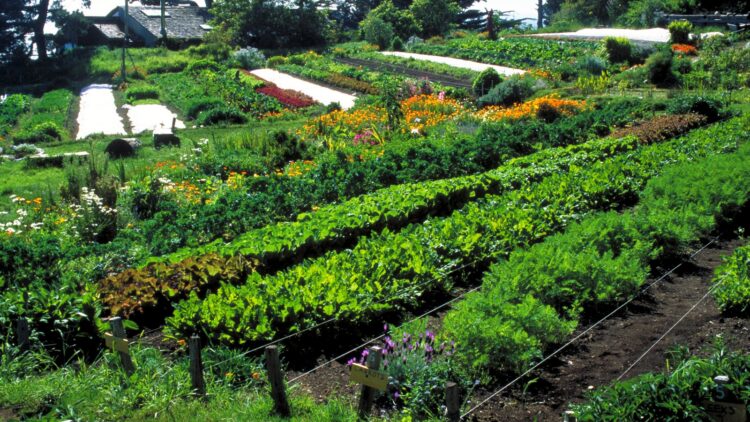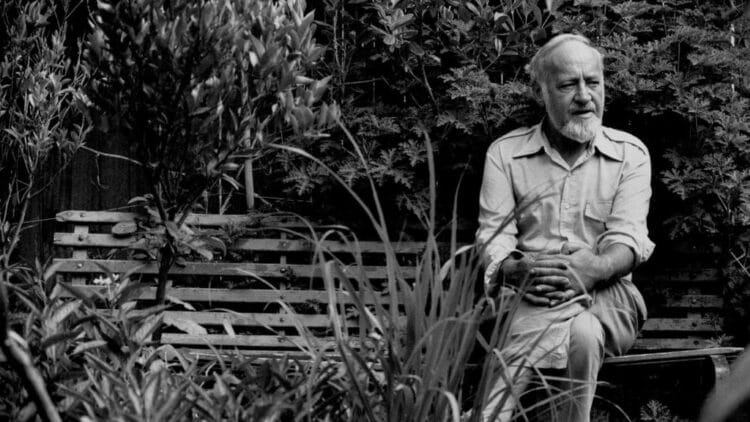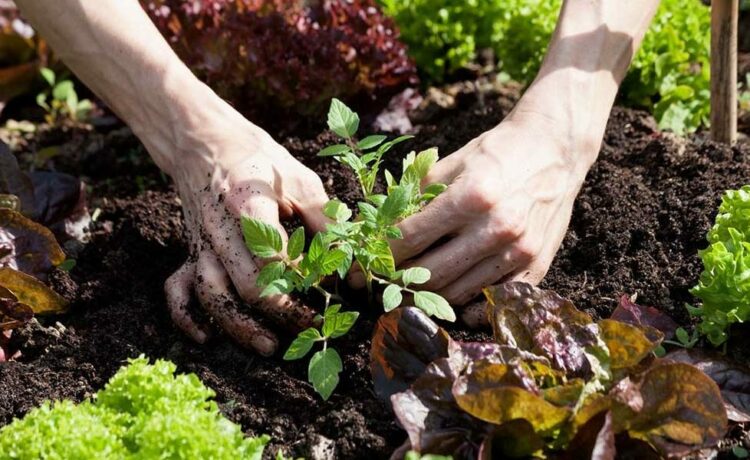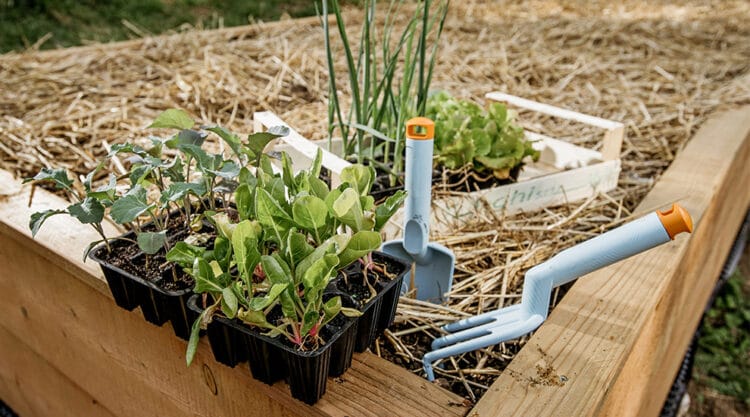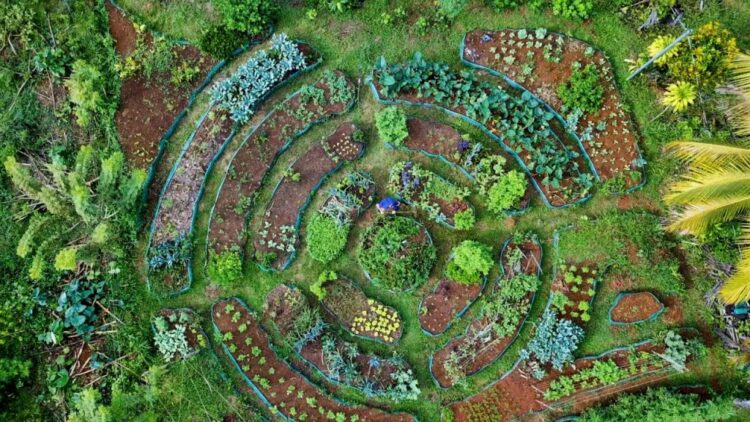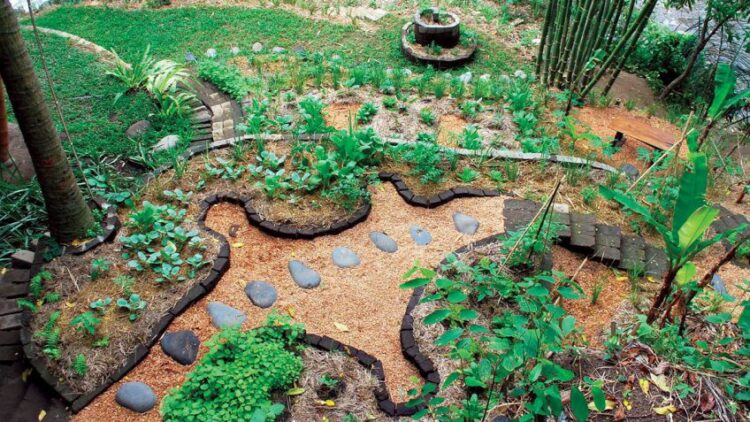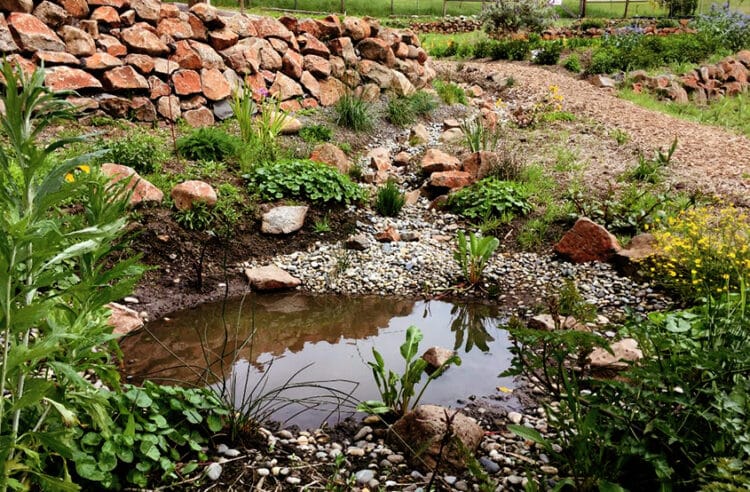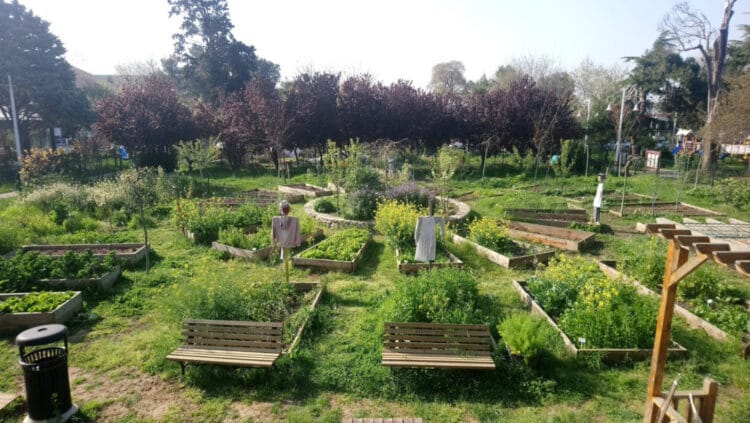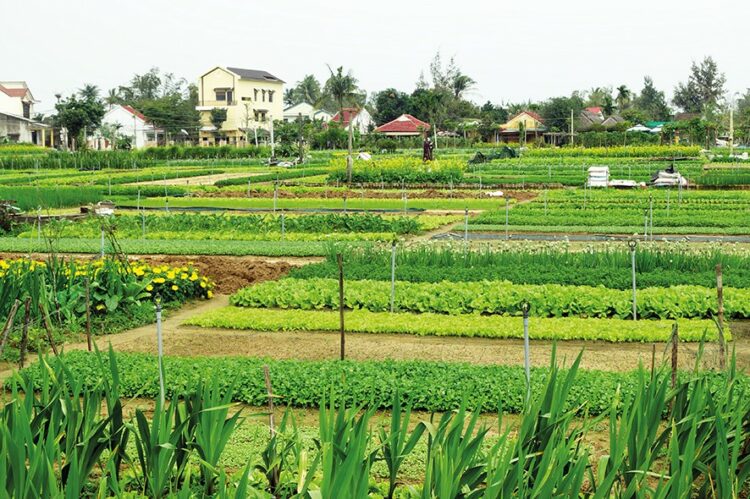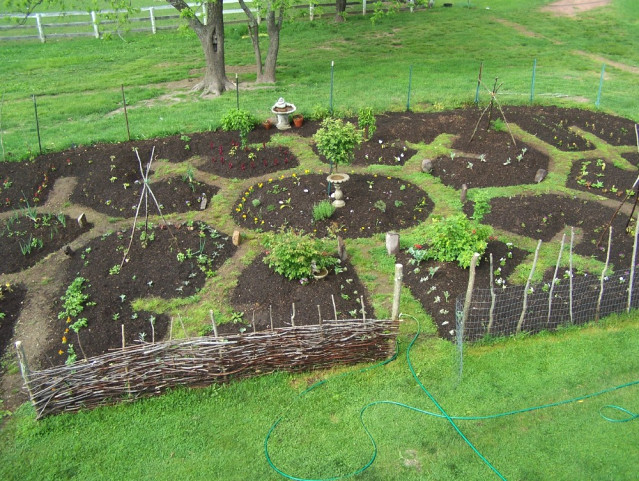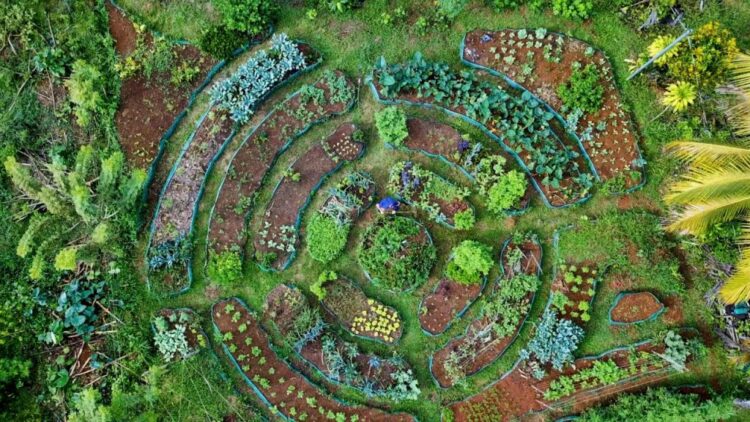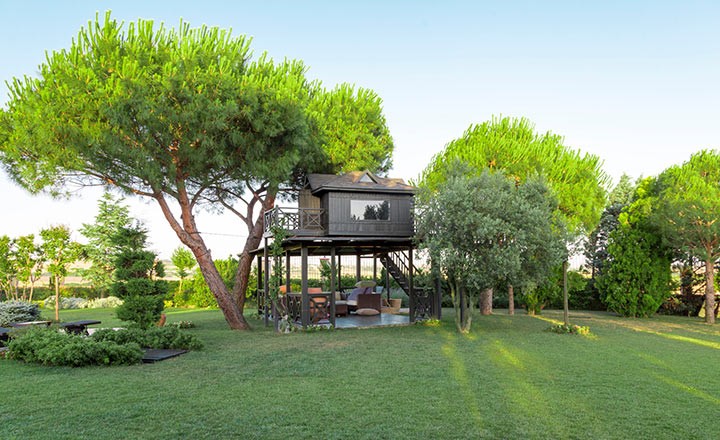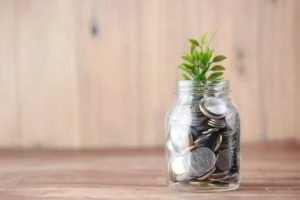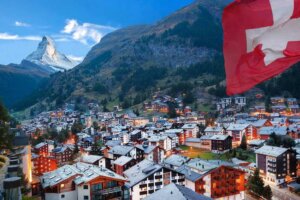Permaculture is a combination of two words: ‘Permanent’ means permanence, sustainability, resilience, while ‘culture’ means everything related to human activity. Therefore, permaculture means permanent culture. If we make a theoretical definition, permaculture is the science of ethically-based sustainable human settlements design.
When it comes to human settlement, from food to waste, from energy systems to water, soil, plant and animal systems; It includes all branches of science from architectural settlement to botanical zoology. In short, we can call it the design science of the ecosystem. Its current meaning has a broad meaning, such as using a sustainable and ethical design method for food production, land use and community building.
Where does the word permaculture come from?
Franklin Hiram King was the first to use ‘permanent agriculture’ in 1911. After the expressions in his book “Farmers of Forty Centuries: Or Permanent Agriculture in Chine, Korea and Japan”, which he wrote in those years, the expression of permaculture was developed and turned into a science.
Permaculture is a system originating from Australia, because Australia is one of the countries most affected by climate change. The country has never experienced an ice age, and many species have been severely damaged by the effects of colonization. On the one hand, it is a country with a very ancient aboriginal culture. It has also been conscious of living in harmony with nature as a hunter-gatherer for thousands of years. Although the ozone hole is one of the problems partially solved by humanity, one of the countries most affected by this problem is Australia.
(adsbygoogle = window.adsbygoogle || []).push({});
Ancestor of Permaculture: Environmental Scientist Bill Mollison
Permaculture is being considered by Australian environmental scientist Bill Mollison and his friend David Holmgren as an alternative to traditional agriculture. Mollison is writing a doctoral thesis called ‘Sustainable Agricultural Techniques’. And this thesis plays a major role in making permaculture scientific, by further expanding its scope later on. According to Mollison’s definition, permaculture is “the conscious design and maintenance of agriculturally productive ecosystems that have the diversity, stability and resilience of natural ecosystems.”
There are 2.5 billion permaculture practitioners worldwide.
Currently, it is known that there are approximately 2.5 billion practitioners of permaculture in the world. Today, many places that provide permaculture training direct the participants to practice and take action quickly after a course of about 2 weeks. The reason for this is shown to be the negative progress of the climate crisis day by day. The increase in population causes an increase in consumption, many species disappear, the destruction of the ecosystem is severe, the migrations that cause hunger and famine, climate change, and systems to protect the ecosystem are developing rapidly.
What is the purpose of permaculture?
One of the goals of permaculture is to produce ecologies that do not create waste, bringing together soil, people, environment and resources by synergies that lead to the benefit of nature, people, people, nature. The main objectives of permaculture are to create an ecological and sustainable system, which is stable, designed considering environmental changes, considering agricultural productivity, while giving importance to diversity in natural ecosystems. Permaculture, which has developed by embracing a philosophy, can also be expressed as the whole of productive communities in which the approach to the soil, annual and perennial plants, animals, microclimate, soil/water management and human needs go together.
Permaculture encompasses everything about life.
It also covers the use of resources in an appropriate, efficient and sustainable way. For example, it covers agriculture, water harvesting and hydrology, energy, natural building, forestry, waste management, animal systems, aquaculture, appropriate technology and economics. In short, everything about life comes into it. Extinct plant and animal species, controlled and uncontrolled exploited resources cannot be renewed.
The permaculture method, which emerged against this cycle, aims to progress by making use of past experiences and adding new ideas to these experiences, without ignoring traditional agricultural activities. Today, its meaning has been expanded to a broader scope, such as using a sustainable and ethical design method in food production, land use, and community building.
What are the three main ethical rules of permaculture?
Permaculture has three main ethical rules: The first is to take care of the earth. Respecting nature, the environment we live in, the environment outside of us and getting used to living in harmony with the ecosystem. In other words, learning to live without interfering with the earth and our living space. The second ethical rule is to take care of people. People have to meet their needs from nature. While meeting these needs, we need to use as much as we need, not as much as we need, and transfer the excess to the next generations. It is a very important item for permaculture that people act by considering their own value without destroying natural resources, disrupting the natural order. The third ethical rule is to determine consumption limits. This rule aims to prevent waste. For example, zero waste projects serve this rule.
Practical Applications in Permaculture
Water Harvesting: If the water resources are limited in the area you have established, the applications made to harvest the existing water, collect it in a tank, collect the rain water or rain water flowing from the roof in one place and then use it for garden irrigation. Small impermeable ponds can be built in an effort to accumulate precipitation waters in the soil. In this way, water can be accumulated.
Covering (Mulch application): It is necessary to cover the soil in order to protect the soil. The method and materials used to cover the soil is called mulching. In general, the best mulching is to cover the soil with plant wastes and vegetation. Recently, in some productions, applications that use plastic materials, which are expressed as mulching, are frequently used.
Compost: Soil organic matter is the food source of all living things in the soil, from microorganisms, bacteria, mice to single-celled organisms, called soil vitality. The main goal is to increase the organic matter content of the cultivated soil. For this reason, all kinds of waste should be added to the soil by making compost. If this is not done, that is, if the wastes generated in the garden are not evaluated and composted, permaculture will not be done.
Soil improvement: There is no more important resource in agricultural production and human life than soil, water and air. In order to improve the soil, the wastes called green manure must be added to the soil. When soil is used for production purposes, at least resting of the soil and recovery of the soil are provided by green manure. For this reason, all kinds of plant and animal waste must be added to the soil.
Reducing labor and costs: When production is made on the soil, this production should be economical and high efficiency should be obtained with less effort.
Animal production: Agriculture includes not only plant production but also animal production. Chicken is a must. If a pond is built, fish can be placed in it. You can raise geese instead of using a lawnmower. Because geese mow your lawn as beautiful as a machine. You can diversify it even more. Like a beehive, for example. A livestock facility can also be established. As a result, the fertilizers to be obtained from the plant can be transferred as fertilizer to the soil where the plants grow.
How to design a permaculture garden?
There are eight basic permaculture gardening techniques to start a sustainable garden.
1) Get to know your surroundings.
Gather information about the plants, insects and predators living in your area and plantation. Look in the sunlit parts of your garden and try to get the best yield from those areas. Check if there is a pond or sloping area around you. Because you will need space to accumulate water for irrigation. Do your research to see if your garden has a different soil, an endemic plant, or unique features. Determine the soil structure, topography, climatic characteristics of the region, and the products that can be grown in the region.
2) Choose plants according to your soil structure.
Study the habitat around you before deciding what and how to plant. If necessary, have a soil analysis done. Be sure to check how old the plants are and how many years they live. Look for crops that will nurture microorganisms, attract beneficial organisms, keep harmful organisms at bay, and fertilize the soil naturally. In particular, try to attract animals such as bees and butterflies from flower to flower in your garden. Turn to green manure plants, which will fix the nitrogen in your soil.
3) Design your garden layout according to the ecosystem.
Once you become familiar with the ecosystem around you, use the data you gather to plan the design of your garden. During the planning process, find out where in the garden you can grow the plants you want to grow most efficiently. Observe existing landscape features, such as the brightest area, the driest area, the wettest area. Grow grass on the ground, there should be bushes on the grass and trees on the bushes. In this way, you can act in harmony with the ecosystem by imitating the layering in nature.
4) Create garden beds.
You can raise plant beds six to 12 inches above the ground by raising them. One of the easiest ways to raise plant beds is with mulch management. With this method, straw, sawdust, leaves, herbs and natural fertilizers are used to create the top layer without disturbing the existing soil structure on the ground.
5) Arrange your plants in order in the permaculture garden.
Some plants, especially small ones, need shade to grow. Start by planting your tall, relatively large plants to meet the shade needs of these smaller plants that are sensitive to sunlight. You can create a suitable area for your small plants like this. Identify plants with the same or different needs and group them so that they are compatible with each other. Check your list over and over if necessary.
6) Add a layer of organic mulch to the top soil.
Permaculture prioritizes environmentally friendly practices and the use of chemicals is incompatible with permaculture principles. For this reason, instead of using chemicals to get rid of weeds and harmful organisms, make sure to keep the soil moist and use organic mulch.
7) Add compost without disturbing the soil.
As we said in the previous article, avoid using chemicals, in other words, turn to natural fertilizers when using fertilizers. Using compost containing organic matter will be good both economically and in terms of making the soil healthier. For example, you can collect biological waste in the kitchen; such as vegetable and fruit peels, leftovers. Thus, you can obtain a natural fertilizer with rich nutritional value. What comes from the soil returns to the soil. You can also benefit from beneficial microorganisms, microbes.
8) When determining the irrigation method, make sure it is sustainable and efficient.
Try to get high efficiency with minimum water and meet the water needs of your soil. If there is a pond, a sloping area or a resource that you can reproduce on the land, take advantage of it as well. One of the most perfect ways to irrigate soil with minimum evaporation is the drip irrigation system. One of the most popular irrigation methods in recent times is to collect the water flowing from the roofs and use it for irrigation.
9) Build a house in your garden.
A house, hut, a structure that you can put your head into must be built on the land. It will be your living point. Start permaculture design around the house. If you are going to make a coop, it will be useful to build it near the house.
10) You can divide the land around the house by region and number it.
For example zone1 zone 2 etc. Zoning the area will provide ease of design as well as ease of use. You can plan different activities in the regions. If you are going to plant vegetables, you should have priority and start from the area closest to you. If you are going to plant a fruit tree, you do not need to plant it in the close area, as you will collect the fruits in certain periods. If you want to make a forest, you can do it in the area after the fruits. The next area could also be the wilderness area.
What are the 12 basic principles of permaculture?
- Observe and interact. When nature is not interfered with under normal conditions, nature already tells what to do. Focusing on the harmony that continues before you in the field, it should be tried to keep up without disturbing it. Goals can be achieved by observing from nature and other people how you can have a greener and more ethical approach.
- Energy must be captured and stored. Our planet is full of energy. Learning how to capture and store this energy – in plants, with renewable energy infrastructure or otherwise, is key to living a sustainable lifestyle. For example, it can be water, a greenhouse can be built on the south side to make better use of solar energy. Composite fertilizer can be obtained from leaves falling from trees and food waste.
- Yields must be achieved. When permaculture, nutrients should not be taken from the outside. The products grown must be used and consumed. If you are getting a surplus product, you can sell it as a natural product and earn income. Living a sustainable lifestyle that adheres to the principles of permaculture can allow us to achieve all kinds of intangible yields as well as the obvious tangible ones.
- Self-editing and feedback should be sought. Understanding where we have succeeded and where we have gone wrong is vital to creating real and lasting change. For example, you want to produce strawberries in your garden. If you haven’t been able to grow it even though you’ve tried everything, you should accept it. It may be beneficial to focus on growing agricultural products that are suitable for the soil.
- Renewable resources and renewable services must be used. Using the power of the sun, wind or water, we can power our homes, grow our food, and renew our environment. These resources should be valued. Environmentally friendly at every stage of permaculture. Instead of relying on limited and polluting fossil fuels, renewable energy sources can be fully exploited.
- Waste should not be generated. Switching to a zero-waste lifestyle means looking at all the garbage we throw out and trying to eliminate it. Reducing the amount we buy, buying enough, reusing or recycling if possible, and composting avoids generating waste. The wastes generated in environmentally friendly agriculture should be brought into the soil by creating a composite.
- Design from models to details. Whether you’re designing a new vegetable garden or designing an entirely new form of sustainable living, you should look at the big picture before getting hung up on the little things. The environment should be taken as an example while planning and designing. In other words, permaculture design should be made based on the patterns in nature. Thinking holistically in all areas of life helps to move in a positive direction.
- Agricultural products should not be separated from each other, they should be integrated. Plants work well in a variety of systems, the same goes for humans. Planting polycultures (plant guilds working together) are just one example of how this principle works in the real world. You can apply it in the garden as well as in communities, groups or organizations.
- Problems should be dealt with calmly, using small and slow solutions. Every journey starts with a single step. When we try to do too much in too little time, we can become overwhelmed, and while big changes bring great benefits, they also bring greater risks. Making small, slow changes is the best way to move towards sustainable change. For example, don’t start a farm, try a small windowsill garden.
- Nature’s diversity must be used and valued. Just as ecosystems work best when populated with a wide variety of different plants and animals, human society works best when a variety of different people are represented. It’s a good idea to support and value diversity in all its forms in your garden, home, and life in general.
- Make the best use of all the materials and resources at your disposal. Sustainability is about using all the resources you have available. Whether we’re talking about land use, businesses, homes, or society in general, making efficient use of everything we have will pay off.
- Be creative and respond to change. Finally, change is an inevitable part of life. It’s important to remember that permaculture isn’t just about the present, it’s about the future. You design for change by understanding that everything will change over time. Changing seasons, changing attitudes, our changing climate… How we respond to these changes will shape sustainable progress in the years to come.
These principles are a starting point for understanding permaculture and can begin to give us an insight into how we can turn thought into action and transition to a more ethical and truly sustainable way of life.
What is permaculture gardening?
Permaculture gardening is based on the concept of designing your garden according to your local environment. Permaculture garden design takes into account the needs of the natural ecosystem and climate as well as meeting human needs. Permaculture gardening also focuses on gradually improving soil quality with nutrients so you can continually rejuvenate the soil while boosting the health of your plants.
If you look at the most preferred plants in permaculture design, you can find many plants on the internet in this context. There is a wide variety of flowers available. Some of them are comfrey, mulberry, acacia, blueberry, lavender, clover, mint, sorrel, marigold, strawberry, vine, hazelnut and nettle.
What should be considered when doing permaculture ?
Successive planting should be done. If you want the garden to look green all the time, plants that bloom one after the other and stay green in certain periods can be preferred. Different types of plants can be used at different ages. For example, when one completes its ecological life, other plants will keep the garden alive.
Plant layers should be created. It is possible to create layers by imitating nature. It is seen that there are trees, bushes under the trees, grass under the bushes. In this way, it can be ensured that the plants are compatible with each other in accordance with the living conditions.
Benefits of Permaculture
Reduced water use, less cost, less waste, less pollution, less toxins, improved values, more self-sufficiency, easy applicability to existing systems. Permaculture integrates land, resources, people and the environment through mutually beneficial synergies. Permaculture explores and implements holistic solutions applicable at all scales in rural and urban contexts. It is a multidisciplinary tool that includes agriculture, water harvesting, hydrology, energy, natural structure, forestry, waste management, animal systems, aquaculture, appropriate technology, economics and community development.
Differences and Similarities Between Permaculture and Agroecology
Agroecology and permaculture are often confused, but these two practices are different. Agro-ecology goes further than biological agriculture as it uses sustainable farming systems with techniques such as complementarity, composting or growing in mounds. Then, water conservation, erosion control, etc. the above practices can also be found in permaculture, but the latter is broader because it focuses not only on creating sustainable and resilient farming systems, but also on integrating them.
The Most Successful Permaculture Projects Around the World
- Ferme MiKu Valley Farm: MiKu is located in rural Eastern Ontario, Canada and is a thriving educational region. The ranch spans 68 acres and is home to a small group of animals, sprawling market gardens, food forest development and a training ground with permaculture design. It welcomes guests over three seasons to help promote permaculture practices and gain hands-on experience.
- Findhorn Ecovillage: The Findhorn Foundation community is an eco experiment in conscious living, an education center and ecovillage located on the west coast of Scotland in the United Kingdom. The Foundation prides itself on being sustainable not only environmentally, but also socially, economically and spiritually. Findhorn offers a permaculture design course to provide a comprehensive introduction to permaculture principles, design practices and practices.
- Green Beat Farm: Green Beat is a productive, experimental and educational farm based on permaculture principles in Tulum, Mexico. The farm produces vegetables and microgreens for local restaurants, hotels and community members. The main products produced include arugula, chard, kale, mustard and broccoli. Green Beat also hosts a large volunteer program that welcomes individuals from all over the world.
- Habiba Organic Farm: Located in Nuweiba, Egypt, Habiba Organic Farm is a former piece of desert in a Bedouin settlement converted into fertile land. The primary interest of Habiba farmers is to conduct experiments to develop farming techniques suitable for the Sinai Peninsula. This area was previously difficult to grow suitable crops. The farm has been successful in introducing a range of crops that can thrive in desert conditions.
- Happy Food Farm: Located in Nanning, China, this farm produces fruits, vegetables and flowers, and raises fish and chickens. The farm is almost entirely self-sufficient with the fruits and vegetables it grows. In addition, the farm organizes educational programs by developing a special application to teach the benefits of permaculture to children in the region.
- IDEP Foundation: IDEP is a non-governmental organization in Bali, Indonesia. The foundation offers education, community programs related to sustainable development through the permaculture method and disaster management. Its foundation-wide work spans the four areas that make up the resilience cycle, including permaculture, disaster preparedness, emergency response, and community recovery.
- Permaculture Institute of El Salvador: This permaculture movement is an organization of farmers and forms an alliance of three local permaculture associations: Suchitoto Ecological Permaculturists Association, Indigenous Kakawira Farmers Ecological Association and Permaculturists Association of Torola. Their mission is to promote permaculture for the development of a healthier, smarter and more ecologically sustainable society.
- Koanga Institute Koanga is home to New Zealand’s largest heritage organic seed collection. The Institute provides a home for the Permaculture Research Institute in Wairoa, New Zealand, and is internationally known for producing competent and knowledgeable students and teachers. The workshops are for individuals who want to live sustainably and empower change in their communities.
- Permaculture Association of South Australia: PASA is a not-for-profit organization whose primary purpose is to promote, practice and represent permaculture in South Australia. The organization works to protect the earth, protect people, limit consumption and equitable distribution of resources. PASA acts as a bridge for local groups to connect with each other and learn about projects in South Australia, Australia and the rest of the world.
- Permaculture Community in Ukraine: The non-governmental organization that carries out permaculture work in Ukraine aims to unite the efforts of those who successfully apply permaculture techniques in their homes and give them the opportunity to share their experience and support others. Their mission is to disseminate knowledge and promote the idea of permaculture in society. Their future goal is to establish the Permaculture School in Ukraine to provide a high level of permaculture education, taking into account local conditions and needs.
- Permaculture Institute of North America: PINA supports students and experienced permaculture practitioners in North America and Hawaii. PINA’s primary goals include maintaining professional standards in permaculture design, teaching and practice. The organization also supports permaculture education through a certification process that recognizes exceptional achievement and excellence.
- Permaculture Institute of Thailand (PIT): The Institute promotes itself as a Thai permaculture support organization that promotes, supports and facilitates education, demonstrations and farmers of all kinds related to practicing permaculture. PIT’s mission is to disseminate ethics, principles and theory throughout Thailand, promote a sustainable livelihood and address local poverty issues.
- Philly Permaculture: This organization serves as a local forum for all things permaculture located in Philadelphia, Pennsylvania. They choose and watch a different educational film each month and discuss how to incorporate what they have learned into their permaculture practice.
- Regenerative Kitchen Garden and Food Forest: Located in Anjuna, India, this project focuses on the ecosystem regeneration of land where vegetation has been systematically burned for 20 years.
- Senegal Permaculture Project: This project was implemented at the request of a local Senegalese landowner to promote sustainability and local growth in Senegal. The project focuses on the use of an 11-acre local farm as a demonstration and training ground for villagers. The permaculture systems shown will include collecting water in a permaculture system, planting trees, building permaculture guilds, soil fertility, and animals.
- Third Millennium Alliance: The Alliance takes a holistic approach to protect the last remnants of Ecuador’s coastal Pacific Forest and empower local communities to restore and protect what has been lost. Its practices promote economic and environmental sustainability in the region for local communities. To date, they have planted more than 20,000 trees and developed an experimental fruit tree garden with over 50 species of food trees, a vegetable garden and a tree nursery.

